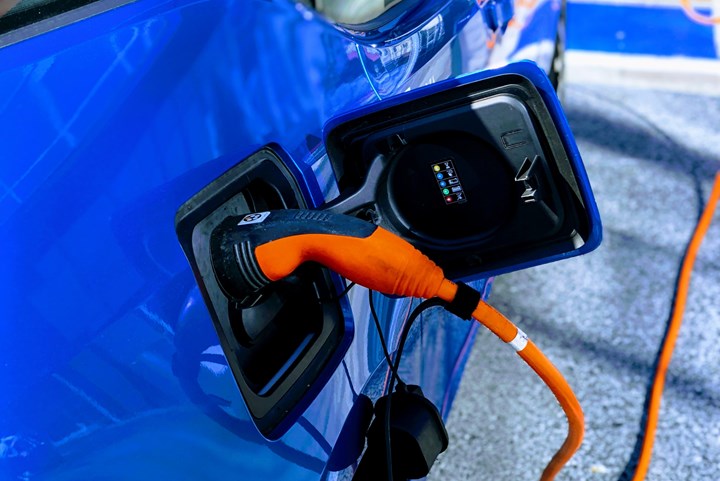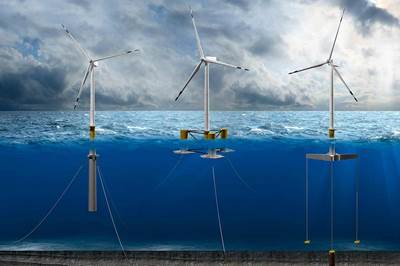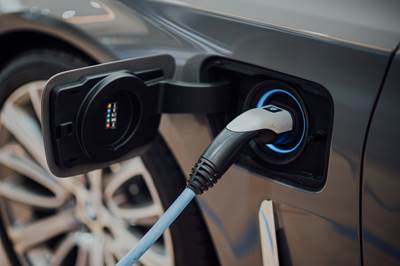U.S. administration targets 50% electric vehicle sales in 2030
Outlined target kicks off investments in infrastructure, manufacturing and incentives to advance long-term fuel efficiency and emissions standards, with GM, Ford, Stellantis and UAW supporting this effort.

Photo Credit: John Cameron
On Aug. 5, the U.S. administration announced a set of new actions aimed at advancing the investment in infrastructure, manufacturing and incentives detailed under the Build Back Better Agenda and the Bipartisan Infrastructure Deal. The ultimate goal is to grow good-paying jobs and position the U.S. to drive the electric vehicle (EV) future forward, outcompete China and tackle the climate crisis.
Specifically, the U.S. president signed an Executive Order that sets an ambitious new target to make half of all new vehicles sold in 2030 zero-emissions vehicles, including battery electric, plug-in hybrid electric or fuel cell electric vehicles (FCEVs). This target is calibrated to provide time for existing manufacturing facilities to upgrade without stranding assets, upgrades that will be catalyzed by the Build Back Better Agenda and lean into a path that expands domestic U.S. manufacturing with union workers. The Executive Order also kicks off development of long-term fuel efficiency and emissions standards to save consumers money, cut pollution, boost public health, advance environmental justice and tackle the climate crisis.
In addition, and consistent with the president’s Day One Executive Order, the Environmental Protection Agency (EPA) and U.S. Department of Transportation (USDOT) have announced how they are addressing the previous administration’s rollbacks of near-term fuel efficiency and emissions standards.
These new actions — paired with the investments in the Build Back Better Agenda — will reportedly strengthen U.S. leadership in clean cars and trucks by accelerating innovation and manufacturing in the auto sector, bolstering the auto sector domestic supply chain and growing auto jobs. Ford Motor Co. (Dearborn, Mich., U.S.), General Motors (GM, Detroit, Mich., U.S., see “Coats joins GM-led U.S. DOE project to develop composite EV battery enclosures”), Stellantis (Amsterdam, Netherlands, see “STELIA Aerospace Composites advances hydrogen storage”) and the United Auto Workers (UAW, Detroit, Mich., U.S.) will be supporting this effort.
Build Back Better investment agenda
It is noted that over the last decade, there has been a global market shift in the technology costs, performance and availability for EVs. Since 2010:
- Battery pack costs have dropped by 85%, paving the way to sticker price parity with gasoline-powered vehicles.
- Average vehicle range have increased dramatically as charging times shortened.
- Electric models available to U.S. consumers have expanded to more than 40 last year, and is still growing.
However, despite pioneering the technology, the U.S. is behind in the race to manufacture these vehicles and the batteries that go in them. Today, the U.S. market share of EV sales is only one-third that of the Chinese EV market. The president believes it is time for the U.S. to lead in EV manufacturing, infrastructure and innovation, by investing in:
- Installing the first national network of EV charging stations.
- Delivering point-of-sale consumer incentives to spur U.S. manufacturing and union jobs.
- Financing the retooling and expansion of the full domestic manufacturing supply chain.
- Innovating the next generation of clean technologies to maintain a competitive edge.
To further advance these goals, last month, the Department of Commerce announced $3 billion in currently available American Rescue Plan funds that can be used to advance the domestic EV industry in communities that have historically been the backbone of the U.S. auto industry.
Smart fuel efficiency and emissions standards
Further, the Environmental Protection Agency (EPA) and U.S. Department of Transportation’s National Highway Traffic Safety Administration (NHTSA) are to announce how they are addressing the previous administration’s fuel efficiency and emissions standards. The two agencies’ standards work in a compatible fashion through model year 2026, with the NHTSA proposed rule starting in model year 2024 and the EPA proposed rule taking effect a year sooner with model year 2023. The standards build on the momentum from “California Framework Agreement,” an agreement between the state of California and five automakers: Ford, Honda (Tokyo, Japan), Volkswagen Group (Berlin, Germany), BMW (Munich, Germany) and Volvo (Gothenburg, Sweden).
Through these coordinated notices of proposed rulemaking, the two agencies are advancing smart fuel efficiency and emissions standards that could deliver around $140 billion in net benefits over the life of the program, save about 200 billion gallons of gasoline and reduce around two billion metric tons of carbon pollution. For the average consumer, this means net benefits of up to $900 over the life of the vehicle in fuel savings.
Building on these near-term steps, the signed Executive Order lays out a robust schedule for development of fuel efficiency and multi-pollutant emissions standards through at least model year 2030 for light-duty vehicles and for medium- and heavy-duty vehicles starting as early as model year 2027. The Executive Order also directs agencies to:
- Consult with the Secretaries of Commerce, Labor and Energy on ways to accelerate innovation and manufacturing in the automotive sector, to strengthen the domestic supply chain for that sector, and to grow jobs that provide good pay and benefits.
- Engage with California and other states leading the way in reducing vehicle emissions.
- Secure input from a diverse range of stakeholders, including representatives from labor unions, industry, environmental justice organizations and public health experts.
Together, these announcements would put the U.S. on track to reduce greenhouse gas emissions from new passenger vehicle sales by more than 60% in 2030 compared to vehicles sold last year, and facilitate achieving the president’s goal of 50-52% net economy-wide greenhouse gas emission reductions below 2005 levels in 2030.
Related Content
Bio-based acrylonitrile for carbon fiber manufacture
The quest for a sustainable source of acrylonitrile for carbon fiber manufacture has made the leap from the lab to the market.
Read MoreThe making of carbon fiber
A look at the process by which precursor becomes carbon fiber through a careful (and mostly proprietary) manipulation of temperature and tension.
Read MoreWhy aren't composites synonymous with infrastructure?
The U.S. seems poised to invest heavily in infrastructure. Can the composites industry rise to the occasion?
Read MoreThe state of recycled carbon fiber
As the need for carbon fiber rises, can recycling fill the gap?
Read MoreRead Next
U.S. administration sets stage for offshore floating wind turbines
Pacific Coast opened to advance areas for offshore wind off the northern and central coasts of California, follows the call for 30 GW offshore wind deployment by 2030.
Read MoreU.S. DOE awards $60 million to accelerate zero-emissions vehicle advancement
Twenty four university- and industry-led projects focus on EV and battery technologies, new mobility systems and vehicle lightweighting to meet 2050 net-zero emission goals.
Read MoreCW’s 2024 Top Shops survey offers new approach to benchmarking
Respondents that complete the survey by April 30, 2024, have the chance to be recognized as an honoree.
Read More


























